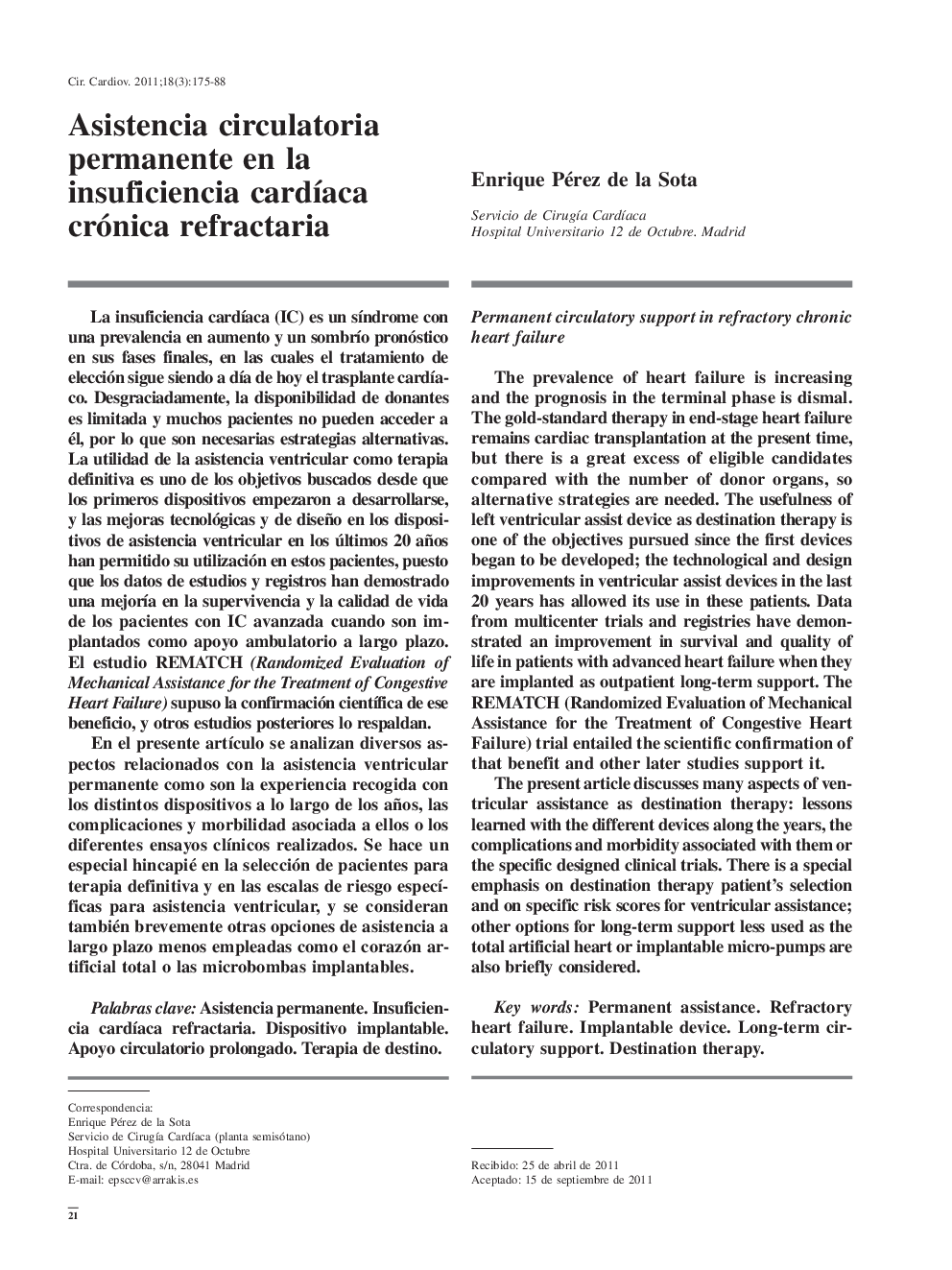| Article ID | Journal | Published Year | Pages | File Type |
|---|---|---|---|---|
| 2907853 | Cirugía Cardiovascular | 2011 | 14 Pages |
La insuficiencia cardíaca (IC) es un síndrome con una prevalencia en aumento y un sombrío pronóstico en sus fases finales, en las cuales el tratamiento de elección sigue siendo a día de hoy el trasplante cardíaco. desgraciadamente, la disponibilidad de donantes es limitada y muchos pacientes no pueden acceder a él, por lo que son necesarias estrategias alternativas. La utilidad de la asistencia ventricular como terapia definitiva es uno de los objetivos buscados desde que los primeros dispositivos empezaron a desarrollarse, y las mejoras tecnológicas y de diseño en los dispositivos de asistencia ventricular en los últimos 20 años han permitido su utilización en estos pacientes, puesto que los datos de estudios y registros han demostrado una mejoría en la supervivencia y la calidad de vida de los pacientes con IC avanzada cuando son implantados como apoyo ambulatorio a largo plazo. El estudio REMATCH (Randomized Evaluation of Mechanical Assistance for the Treatment of Congestive Heart Failure) supuso la confirmación científica de ese beneficio, y otros estudios posteriores lo respaldan.En el presente artículo se analizan diversos aspectos relacionados con la asistencia ventricular permanente como son la experiencia recogida con los distintos dispositivos a lo largo de los años, las complicaciones y morbilidad asociada a ellos o los diferentes ensayos clínicos realizados. Se hace un especial hincapié en la selección de pacientes para terapia definitiva y en las escalas de riesgo específicas para asistencia ventricular, y se consideran también brevemente otras opciones de asistencia a largo plazo menos empleadas como el corazón artificial total o las microbombas implantables.
The prevalence of heart failure is increasing and the prognosis in the terminal phase is dismal. The gold-standard therapy in end-stage heart failure remains cardiac transplantation at the present time, but there is a great excess of eligible candidates compared with the number of donor organs, so alternative strategies are needed. The usefulness of left ventricular assist device as destination therapy is one of the objectives pursued since the first devices began to be developed; the technological and design improvements in ventricular assist devices in the last 20 years has allowed its use in these patients. Data from multicenter trials and registries have demonstrated an improvement in survival and quality of life in patients with advanced heart failure when they are implanted as outpatient long-term support. The REMATCH (Randomized Evaluation of Mechanical Assistance for the Treatment of Congestive Heart Failure) trial entailed the scientific confirmation of that benefit and other later studies support it.The present article discusses many aspects of ventricular assistance as destination therapy: lessons learned with the different devices along the years, the complications and morbidity associated with them or the specific designed clinical trials. There is a special emphasis on destination therapy patient’s selection and on specific risk scores for ventricular assistance; other options for long-term support less used as the total artificial heart or implantable micro-pumps are also briefly considered.
